originally from Twitter: Elmwood Electronics 🇨🇦 (@elmwoodelec) – 24 Oct 2017: Public service announcement! Don’t leave your #apple2 #vintagecomputer unattended, lest a capacitor or transformer decide to start smoking.
Tag: appleII
-
The smell of smoking RIFA capacitors
as caught on the Elmwood Electronics security camera, 2017 -
Tetris for Applesoft BASIC

a very paused game Paleotronic’s Tetris for Applesoft BASIC is a surprisingly decent version for something that’s written in an interpreted language. It’s not what anyone would call zippy, but it’s not so slow that you want to give up.
Paleotronic want you to type it in, but life’s too short for that. You can play it in your browser on the Internet Archive: Tetris for Applesoft BASIC by Mark Stock
Or download an auto-booting Apple II disk image:
Keys:
- , — move left
- . — move right
- A — rotate left
- R — rotate right
- Z — drop
- P — pause
- Q — quit
Life’s also too short for correcting OCR errors in BASIC code. Tesseract is hilariously bad at recognizing source code, so I had to go through this several times. AppleCommander’s BASIC Tools was very handy for catching the last of the errors with its variable dump: caught the cases of the TO keyword converted to the variable T0 … and frankly, I am no fan of SmartQuotes when applied to source code, either.
Here’s the source, straight from the interpreter with all its weird spacing:
10 GOSUB 1000 100 W = W +1: IF W >LV THEN W = 0: GOSUB 350 110 K = PEEK(KB): IF K > = H THEN POKE KC,H:K = K -H: GOSUB 300 190 GOTO 100 200 PY = PY *A2: VLIN PY,PY +A1 AT PX: RETURN 225 PY = PY *A2: HLIN X1,X2 AT PY: HLIN X1,X2 AT PY +A1: RETURN 300 ON E(K) GOTO 30000,330,340,350,360,30100 310 RETURN 330 X = X -1: GOTO 400 340 X = X +1: GOTO 400 350 DN = 1:Y = Y +1: GOSUB 400:DN = 0: RETURN 360 S = S +1: IF S/4 = INT(S/4) THEN S = S -4 400 GOSUB 500 410 GOSUB 800: IF F = 0 THEN X = XX:Y = YY:S = SS: GOSUB 420: IF DN THEN GOSUB 900 420 COLOR= CF: FOR PP = 1 TO 4:PX = X +X(S,PP):PY = Y +Y(S,PP): GOSUB 200: NEXT PP:XX = X:YY = Y:SS = S:D = 0: RETURN 500 IF DD THEN RETURN 510 COLOR= CB: FOR PP = 1 TO 4:PX = XX +X(SS,PP):PY = YY +Y(SS,PP): GOSUB 200: NEXT PP:DD = 0: RETURN 800 F = 1: FOR PP = 1 TO 4:PY = Y +Y(SS,PP): ON ( FN PC(X +X(S,PP)) >0) GOTO 805: NEXT PP: RETURN 805 F = 0: RETURN 850 F = 1: RETURN 900 P = 10: GOSUB 30300 905 RN = 0:Y = YM 910 X = XL 920 PY = Y: IF FN PC(X) = CB THEN 950 930 X = X +1: IF X < = XR THEN 920 940 R(RN) = Y:RN = RN +1 950 Y = Y -1: IF Y > = 0 THEN 910 960 IF RN THEN GOSUB 30400 970 Y = 0 980 X = INT((XR -XL)/2) +XL 985 S = INT( RND(1) *NS):CF = C(S):S = S *4 990 GOSUB 800: IF F THEN RETURN 995 GOTO 31000 1000 DIM E(127),X(27,4),Y(27,4),R(40) 1010 TEXT : HOME : GR 1011 PRINT "WELCOME..." 1014 LM = 10 1015 XM = 10:YM = 15 1016 XL = INT((40 -XM)/2) 1017 XR = XL +XM -1 1021 A1 = 1 1022 A2 = 2 1030 DEF FN PC(X) = SCRN( X,PY *A2) 1040 CB = 0 1050 XX = 20:YY = 0:SS = 0 1100 KB = -16384 1110 KC = -16368 1120 H = 128 1129 REM KEYBOARD ACTIONS 1130 REM QUIT 1131 E( ASC("Q")) = 1 1132 E( ASC("Q") -64) = 1 1140 REM MOVE LEFT 1141 E(8) = 2 1142 E( ASC(",")) = 2 1150 REM MOVE RIGHT 1151 E(21) = 3 1152 E( ASC(".")) = 3 1160 REM MOVE DOWN 1161 E(32) = 4 1162 E( ASC("Z")) = 4 1170 REM ROTATE 1171 E( ASC("R")) = 5 1172 E(13) = 5 1173 E( ASC("A")) = 5 1179 REM PAUSE GAME 1180 E( ASC("P")) = 6 1181 E( ASC("P") -64) = 6 1185 GOSUB 2000 1186 GOSUB 1300 1190 PRINT "PRESS ANY KEY TO START..." 1191 PRINT 1192 PRINT "PRESS Q TO QUIT." 1193 GOTO 31020 1299 REM DRAW THE GAME 1300 COLOR= 4: FOR I = 0 TO 19:X1 = 0:X2 = 39:PY = I: GOSUB 225: NEXT 1320 COLOR= CB: FOR I = 0 TO YM:X1 = XL:X2 = XR:PY = I: GOSUB 225: NEXT 1350 RETURN 1400 DATA 1 1401 DATA 0,0,1,0,0,1,1,1 1402 DATA 0,0,1,0,0,1,1,1 1403 DATA 0,0,1,0,0,1,1,1 1404 DATA 0,0,1,0,0,1,1,1 1410 DATA 2 1411 DATA 0,1,1,1,2,1,3,1 1412 DATA 1,0,1,1,1,2,1,3 1413 DATA 0,1,1,1,2,1,3,1 1414 DATA 1,0,1,1,1,2,1,3 1420 DATA 12 1421 DATA 1,1,0,1,1,0,2,1 1422 DATA 1,1,0,1,1,0,1,2 1423 DATA 1,1,0,1,2,1,1,2 1424 DATA 1,1,1,0,2,1,1,2 1430 DATA 13 1431 DATA 1,1,0,1,2,1,0,2 1432 DATA 1,1,1,0,1,2,2,2 1433 DATA 1,1,0,1,2,1,2,0 1434 DATA 1,1,1,0,1,2,0,0 1440 DATA 9 1441 DATA 1,1,0,1,2,1,2,2 1442 DATA 1,1,1,0,1,2,2,0 1443 DATA 1,1,0,1,2,1,0,0 1444 DATA 1,1,1,0,1,2,0,2 1450 DATA 3 1451 DATA 1,1,1,0,0,0,2,1 1452 DATA 1,1,1,0,0,1,0,2 1453 DATA 1,1,1,0,0,0,2,1 1454 DATA 1,1,1,0,0,1,0,2 1460 DATA 6 1461 DATA 1,1,0,1,1,0,2,0 1462 DATA 1,1,0,1,0,0,1,2 1463 DATA 1,1,0,1,1,0,2,0 1464 DATA 1,1,0,1,0,0,1,2 1990 DATA -1 2000 X = 0:Y = 0 2010 NS = 0 2020 READ C: IF C < > -1 THEN C(NS) = C: FOR J = 0 TO 3: FOR I = 1 TO 4: READ X(NS *4 +J,I): READ Y(NS *4 +J,I): NEXT I: NEXT J:NS = NS +1: GOTO 2020 2030 RETURN 21210 P = 1: RETURN 30000 TEXT : HOME : END 30100 HOME 30110 PRINT "GAME PAUSED. PRESS P TO CONTINUE..." 30120 P = 1 30130 K = PEEK(KB): IF K > = H THEN POKE KC,H:K = K -H: GOSUB 30200 30140 IF P THEN 30130 30150 HOME 30160 PRINT "SCORE ";SC; TAB( 21);"LEVEL ";LM -LV +1 30170 RETURN 30200 ON E(K) GOTO 30000,30210,30210,30210,30210,30220 30210 RETURN 30220 P = 0 30230 RETURN 30300 SC = SC +P 30310 VTAB 21: HTAB 7 30320 PRINT SC; 30330 RETURN 30400 RN = RN -1 30410 FOR C = 0 TO 32 30415 COLOR= C 30420 FOR I = 0 TO RN:X1 = XL:X2 = XR:PY = R(I): GOSUB 225: NEXT I 30430 FOR I = 0 TO 2: NEXT I 30440 NEXT C 30450 FOR I = 0 TO RN 30460 Y = R(I) +I 30470 YP = Y -1: FOR X = XL TO XR:PY = YP: COLOR= FN PC(X):PX = X:PY = Y: GOSUB 200: NEXT X:Y = Y -1: IF Y >0 THEN 30470 30480 P = 100: GOSUB 30300 30490 NEXT I 30495 RETURN 31000 VTAB 22: PRINT 31010 PRINT " GAME OVER" 31020 P = 1 31030 K = PEEK(KB): IF K > = H THEN POKE KC,H:K = K -H: GOSUB 31200 31040 IF P THEN 31030 31050 D = 1 31060 SC = 0:LV = LM 31070 GOSUB 30150 31080 GOSUB 1300 31090 GOTO 905 31200 ON E(K) GOTO 30000 31210 P = 0: RETURN 32000 REM END OF LISTINGIf only AppleSoft had a RENUM command, the code might not look so messy
-
making Apple II cassette audio using the Epple-II emulator

yes, it’s PLOTPOURRI … Hey! The Epple-II build process has changed completely, and I can’t even get the emulator to start under Linux now.
as requested on reddit:
- on Linux, you’ll probably need a development system, 6502 assembler and SDL2 libraries:
sudo apt install git build-essential autoconf automake libsdl2-dev libsdl2-image-dev libsdl2-ttf-dev xa65 - download from https://github.com/cmosher01/Epple-II/releases or
git clone https://github.com/cmosher01/Epple-II.git - similarly, download Apple II ROMs from https://github.com/cmosher01/Apple-II-Source/releases or
https://github.com/cmosher01/Apple-II-Source.git - build Epple-II:
cd Epple-II && ./bootstrap && ./configure && make - install Epple-II:
sudo make install - build ROMs:
cd ../Apple-II-Source/ && ./bootstrap && ./configure && make - install ROMs:
sudo make install - comment out demo rom and uncomment your rom choice in /usr/local/etc/epple2/epple2.conf
- start Epple-II:
epple2
(Don’t tryepple2 &; the emulator will hang) - in the Epple-II console (F5), create a blank tape image:
cassette blank prog.wav - in the main Epple-II window, paste in your BASIC source (F7) then save it:
SAVE. This may take some time, and there will be a beep - back in the Epple-II console, write the tape image:
cassette save - still in the Epple-II console, close the tape image:
cassette eject out - your Apple II BASIC program is in the file prog.wav.
For example, here’s Plotpourri‘s BASIC code saved to tape:
It’s also a pretty decent Apple II emulator, too.
- on Linux, you’ll probably need a development system, 6502 assembler and SDL2 libraries:
-
Small things that make me happy …
Chebucto Community Net in Nova Scotia still has all its downloads and instructions for helping to get an Apple II (8 bit) & Apple IIGS (16 bit) online.
-
Apple IIgs: before and after graphics
Unless you have the heavy analogue Apple CRT that was specially made for it, composite video output on the Apple IIgs is utterly dismal:
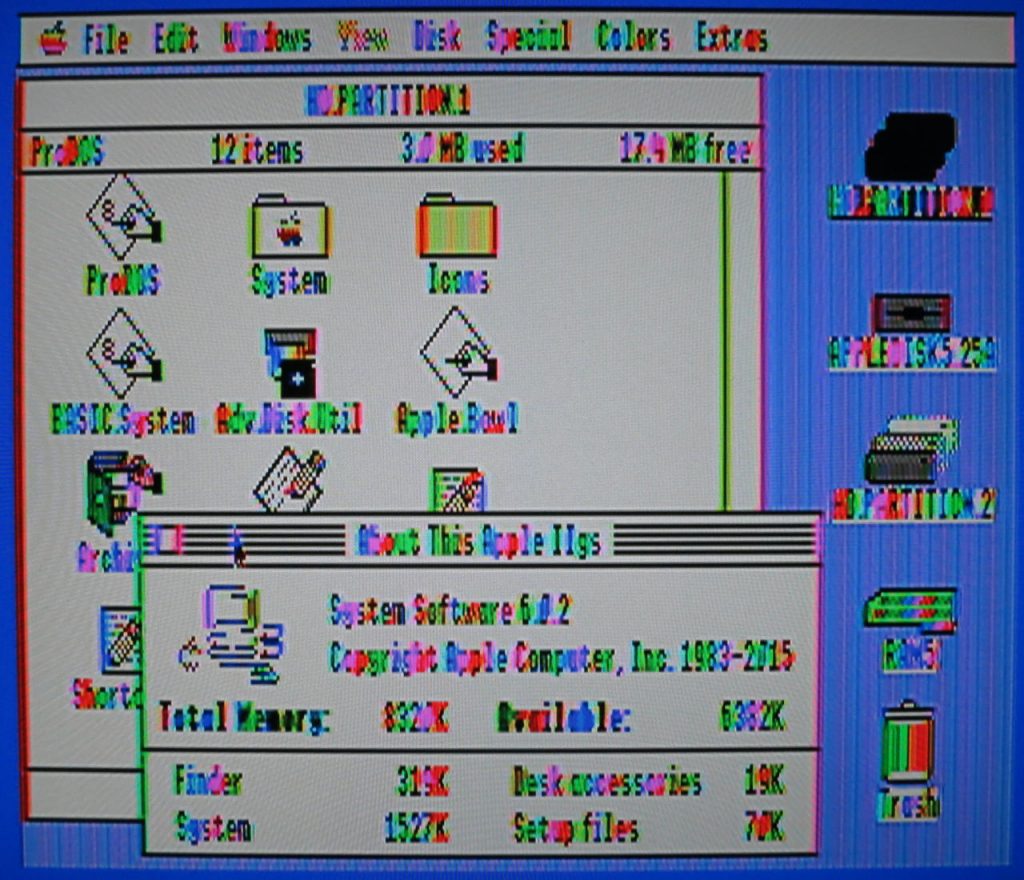
Apple IIgs: composite to LCD display Adding an Apple IIgs → SCART cable through a SCART to HDMI converter is much better:
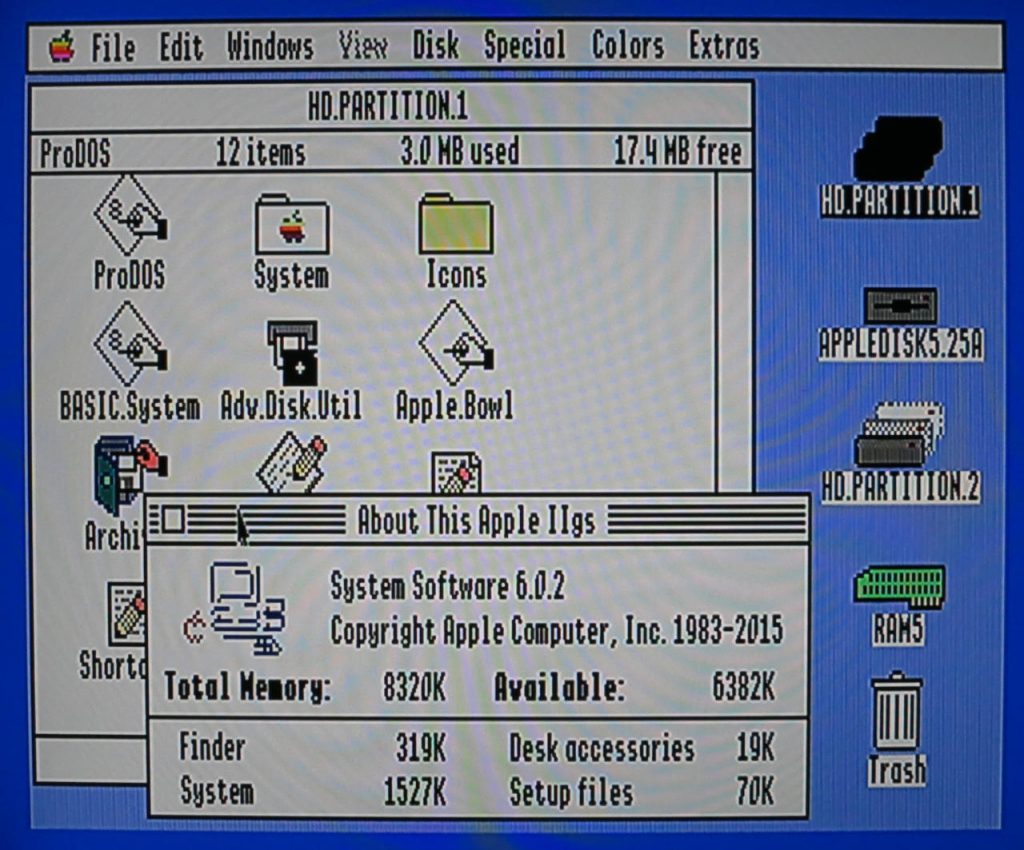
Apple IIgs: via SCART and HDMI There’s still a little bit of shimmer to the background, but at least text is legible.
-
Most of the Logic Apple II Library now on archive.org
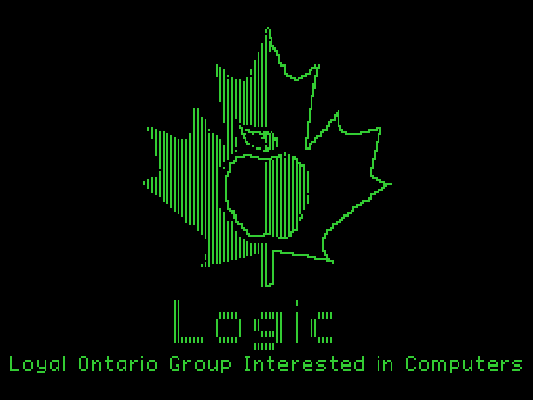
Well, that’s all the disks I can find easily up on archive.org. There are some Apple IIgs disks still to do, and there might be some random disks lurking in another box, but that’s more than 485 disk images uploaded.You can find them by going to Internet Archive Search: creator:”LOGIC (“Loyal Ontario Group Interested In Computersâ€)”.
-
importing Applesoft BASIC programs on the Apple IIe
Just what no-one has needed since about 1979 or so …
BASIC on the Apple II has no easy way to import text as a program. When you LOAD a file, it must be in Apple’s tokenized format. While Apple DOS has the EXEC facility to run script files as if they were typed from the keyboard, it’s very picky about the file format:
- There must be a carriage return character (CR, ASCII 13) before the first line
- All line numbers must have an extra space before and after them
- All tokens must be in upper case
- All tokens (keywords and functions) must have a space after them.
The right way to do this conversion would be to write a tokenizer that spits out the correct binary file. But you can (kinda) fudge it with this shell command, operating from BASIC source PROG.BAS:
sed 's/^[0-9][0-9]*/& /;s/^/ /;1s/^/\n/;s/$/ /;s/[:()]/ & /g;' PROG.BAS | tr '\n' '\r' | ac.sh -p EG.dsk PROG T
ac.sh is the command line version of AppleCommander, and the file EG.dsk referred to above is an Apple DOS 3.3 image created with
ac.sh -dos140 EG.dsk
It still needs work, as there are functions that will mess this up, and Applesoft’s parser makes a mess of code like IF A THEN …, turning it into IF AT HEN ….
So if I wanted to import the following futile program:
10 REM A FUTILE PROGRAM BY SCRUSS 20 HOME 30 FOR X=1 TO 20 40 PRINT SPC(X);"FUTILE" 50 NEXT X
Run through the script (but before EOL conversion) it would look like this:
10 REM A FUTILE PROGRAM BY SCRUSS 20 HOME 30 FOR X=1 TO 20 40 PRINT SPC ( X ) ;"FUTILE" 50 NEXT X
Make a disk and put the modified program text on it:
ac.sh -dos140 futile.dsk sed 's/^[0-9][0-9]*/& /;s/^/ /;1s/^/\n/;s/$/ /;s/[:()]/ & /g;' futile.bas | tr '\n' '\r' | ac.sh -p futile.dsk FUT T
Load the disk into your Apple II, clear out the init program, and import the code with
EXEC FUT: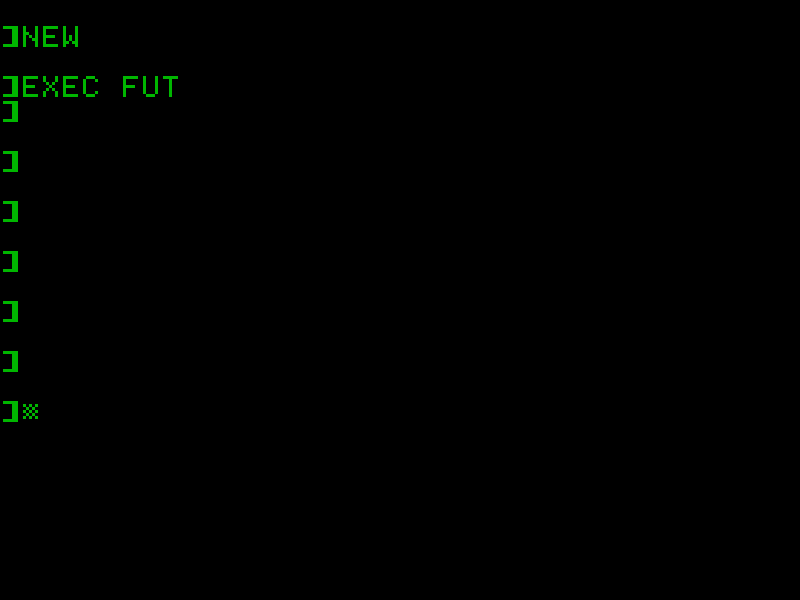
If all you get is ] cursors printed and no syntax errors, then something might be working. List it:
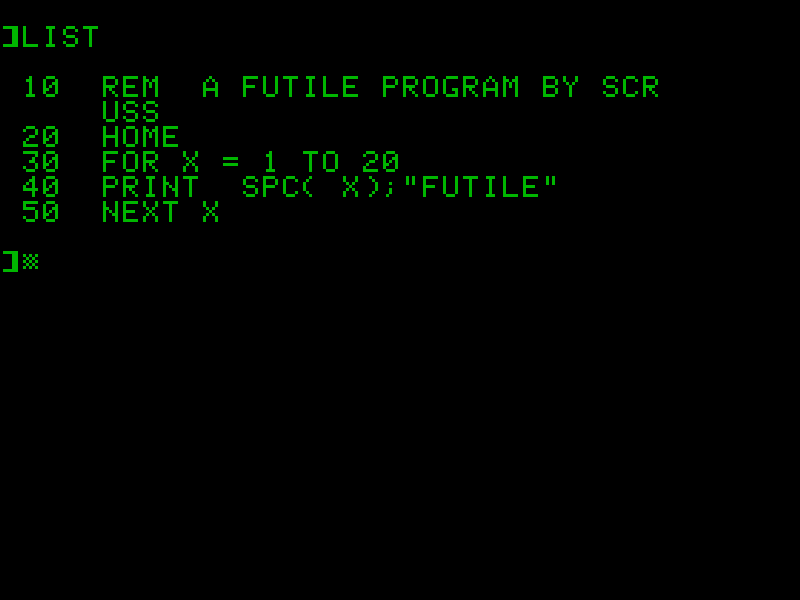
Run it:
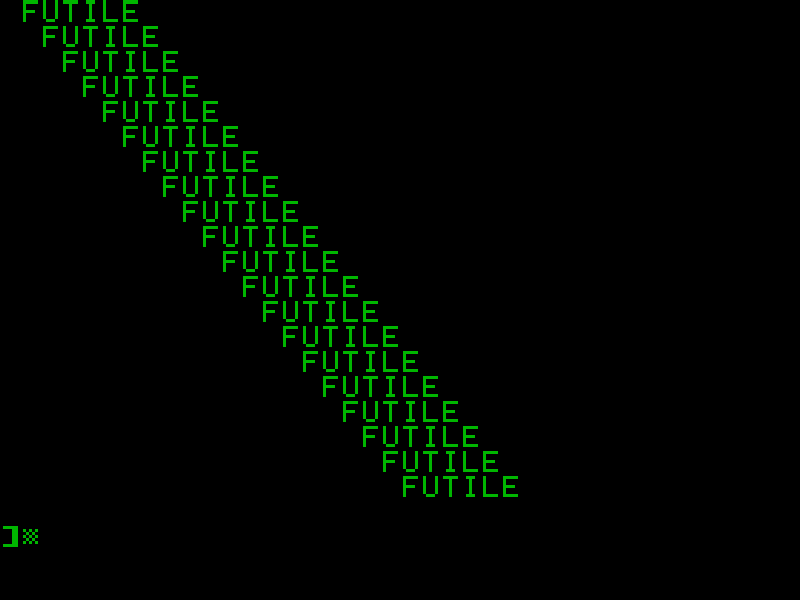
Disk image: futile-AppleII-dsk.zip, containing:
$ ac.sh -l futile.dsk DISK VOLUME #254 T 002 FUT A 002 FUTILE DOS 3.3 format; 134,144 bytes free; 9,216 bytes used.
-
The first of many … Logic Apple II library disks
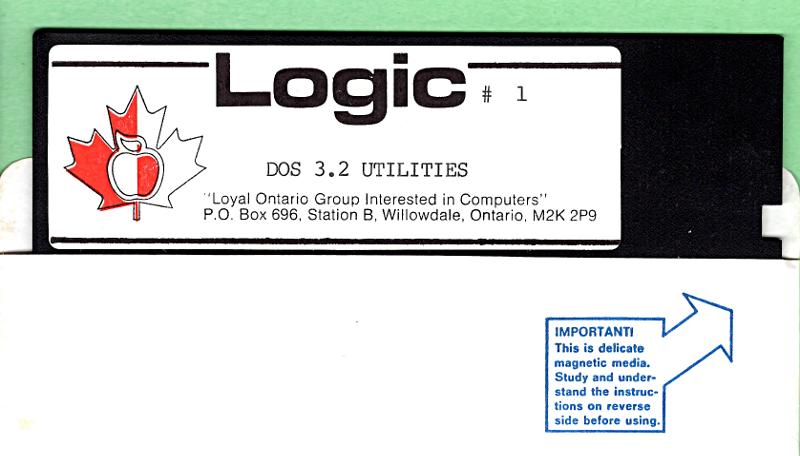
TL;DR Update — The disk images are here: creator:”LOGIC (“Loyal Ontario Group Interested In Computers”)”
The Apple II post from the other day wasn’t as random as it might seem. Through a friend, I got given not just the Apple IIe previously pictured, but also an Apple IIgs and the almost-complete disk library from a local Apple user group.
Logic (“Loyal Ontario Group Interested In Computers”) appears to be defunct now. The Internet Archive has 20+ years of their website logicbbs.org archived, but the domain no longer resolves. It’s a shame if they are completely gone, because user groups contain social history. Once it’s gone, well … never send to know for whom the CtrlG tolls; it tolls for thee.
I’m going to archive as much of the Logic disk library as I can. I’ve been chatting with Jason Scott, and he’s keen to see that the disk images are preserved.
I’d never used an Apple II before. They’re quite, um, different from anything else I’d used. Sometimes hideously low-level (slot numbers!), sometimes rather clever (I/O streams from any of the cards can control the computer). Since nothing but an Apple II can read Apple II disks, I’ve got the IIgs running ADTPro sending images via serial to a Linux machine. It’s pretty quick: a 140 K disk image transfers in around 25 seconds, an 800 K image in just under two minutes. I’m marshalling the images with AppleCommander and trying to keep everything intact despite having little idea what I’m doing.
(Apple II annoyance: searching for the term is harder than it needs to be, as people will try to use the typography of the time and refer to it as “Apple ][”, or “Apple //”. Even though the Unicodely-correct representation should be “Apple Ⅱ”, nobody uses it. I’m going to stick with the two-capital-eyes version ‘cos it’s easier to type.)